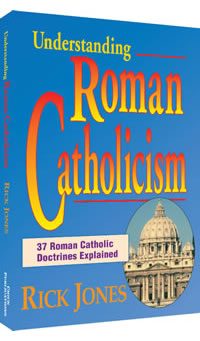Priest's Heart Visits U.S. for Relic Worship
- Issue Date: November/December 2006
In October this year, the actual heart of a 19th century French priest was brought to the U.S. for a worship service. The priest, John Vianney served in Ars, France and had the reputation of being able to "read the hearts of worshippers." He died in 1859, but his body was exhumed in 1904 in preparation for his "beatification." It was discovered that his body had not decayed so his heart was taken out and displayed as a relic.
In 1925, the heart was taken to Rome for Vianney`s canonization, where he was installed in Roman Catholicism`s pantheon of saints supposedly able to lobby God for favors for those who pray to them. Since then, the heart has resided in France until it was brought to Long Island, NY this year.
The occasion for its travel here was the celebration of the 80th anniversary of Cure of Ars Catholic Church, the first church in the U.S. named after St. Vianney. Since then, other churches in the U.S. have adopted the name and their pastors are flying in from all over the country to join in the five-day celebration.
Worship of such relics is just another part of the web of superstitions binding the precious Roman Catholics. Inside the altars of most Roman Catholic churches is a compartment containing some kind of relic. Body parts are the most favored. However, clothing or other personal effects are also used.
During the Dark Ages, Roman Catholic superstition permeated the European culture, primarily because of the ignorance of the people. This ignorance was fostered by Vatican leaders to keep the people in subjection, and superstition was a major tool in maintaining their bondage. When the Protestant reformation brought literacy to the common people so that they could read the Bible, much of that superstition was broken, but remnants remain in the rituals of modern Catholicism. In Latin American and some of Africa where Catholicism dominates, the people are still kept in ignorance, and the superstitions contribute to the poverty and backwardness of the people.
Catholic teaching denies that such relics are worshipped. They prefer "venerated." Yet the trust of the people is redirected from simple faith in Christ to depending on a highly complex ritual not supported by biblical teaching. Jesus said that the Pharisees had made "the word of God of none effect" with their tradition. (Mark 7) So it is with Roman Catholicism: while claiming to stand on the Bible, they have added, through "tradition," a Virgin Mary goddess, a wafer god, a pantheon of "saints" invested with god-like powers, a priestcraft hierarchy, and juju charm relics, all designed to make "the word of God of none effect."
For more information on the pagan traditions of this prostitute "church," known in Revelation 17 and 18 as the whore of Babylon, read David Daniel`s new book, Babylon Religion, available from Chick Publications.
- See more articles on related topics:
- Catholicism
- Virgin Mary
- Idolatry
- Prayer to Mary and Saints
Other Articles from November/December 2006:
More on Catholicism:
Products of Interest:
-

Babylon Religion
224 pages
Learn how a Babylonian goddess became the Virgin Mary. An easy-to-read history of Catholicism's Babylonian origin. -

Answers To My Catholic Friends
64 pages
A gentle witness you can give Catholics that deals with venerating images, purgatory, where popes go when they die, and more. -

Understanding Roman Catholicism
224 pages
37 Catholic doctrines from the current Catechism are compared with the Scriptures. They're not Christian!



